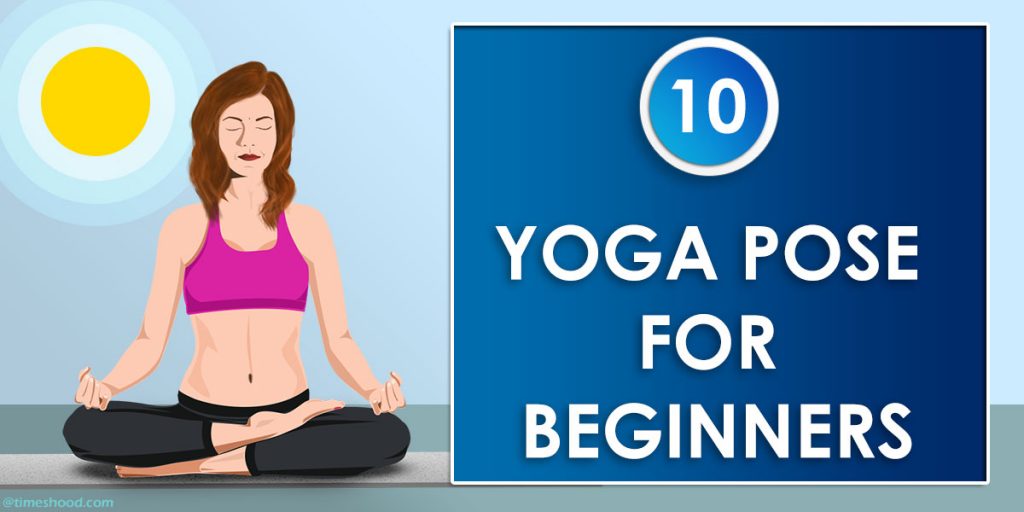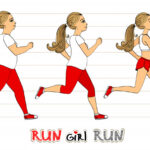This post may contain affiliate links. Please read our disclosure for more info.
Embark on a journey to stretch your body, relax your mind, and fill your soul with peace. Here are 10 easy yoga poses for beginners, ensuring a gentle start to your yoga practice. Learn how to initiate these simple poses and explore the numerous benefits yoga brings to your well-being.
How often have you considered trying yoga, only to be discouraged by seemingly complex poses that leave you feeling overwhelmed? It’s a common experience, but here’s the truth: yoga is not about extreme flexibility or contorting your body into complicated shapes. It’s a simple process that unites your breath, mind, and body effortlessly. So, let go of the myths, and let’s make yoga accessible for beginners.
Getting Started: Before diving into the poses, consider the best time to practice yoga. Mornings before breakfast are ideal, but if that doesn’t fit your schedule, evenings work too. Ensure a four to six-hour gap after any meal or practice on an empty stomach. The perfect times are around sunrise or sunset for a calming session.
Tips for Yoga Beginners:
- Warm-Up: Prioritize a gentle warm-up before your yoga session to prepare your body.
- Comfortable Attire: Dress in comfortable clothing that allows for easy movement.
- Seek Guidance: If you’re new to yoga, seek guidance from an expert or use online tutorials.
- Empty Stomach: Always practice yoga on an empty stomach for a more comfortable experience.
- Consistency is Key: Be consistent in your practice to experience the full benefits of yoga.
- Relax to Recharge: Remember to relax; it’s an essential part of recharging your mind and body.
- Pregnancy Considerations: Pregnant women should consult with their doctors before incorporating yoga into their routine.
Now, let’s explore these 10 easy yoga poses for beginners, making your yoga journey enjoyable and fulfilling.
Also Read: Sun Salutation Challenge: Step by Step Guide
10 Simple and easy yoga for beginners
#1 Tadasana – Mountain Pose

#2 Bhujangasana – Cobra Pose
Bhujangasana, or Cobra Pose, is a beginner-friendly yoga position that offers relief from muscle pain in the back, neck, and abdomen. This pose not only opens up the chest but also enhances breathing, making it an essential component of the Surya Namaskar sequence.
Benefits:
- Relieves pain in the back, neck, and abdomen.
- Opens up the chest, facilitating improved breathing.
- Strengthens the core body.
Duration: Aim to hold the Cobra Pose for 15-30 seconds, investing a brief yet impactful time in this rejuvenating posture.
How to Practice:
- Starting Position: Begin by lying on your stomach on a flat surface, with your forehead resting on the floor.
- Leg Alignment: Keep your legs close together, ensuring that your feet and heels lightly touch each other against the floor.
- Hand Placement: Position your palms on the sides under your shoulders, with elbows parallel and close to your torso.
- Inhale and Lift: Inhale deeply as you slowly lift your head, chest, and abdomen. Distribute your body weight onto your palms.
- Arch Formation: Create an arch by pulling your torso backward, lifting it off the floor with the support of your hands.
- Gentle Descent: Exhale gradually as you bring your body back to the starting position, relaxing after the pose.
Incorporate Bhujangasana into your routine to experience its multifaceted benefits, fostering relief, flexibility, and strength in your body.
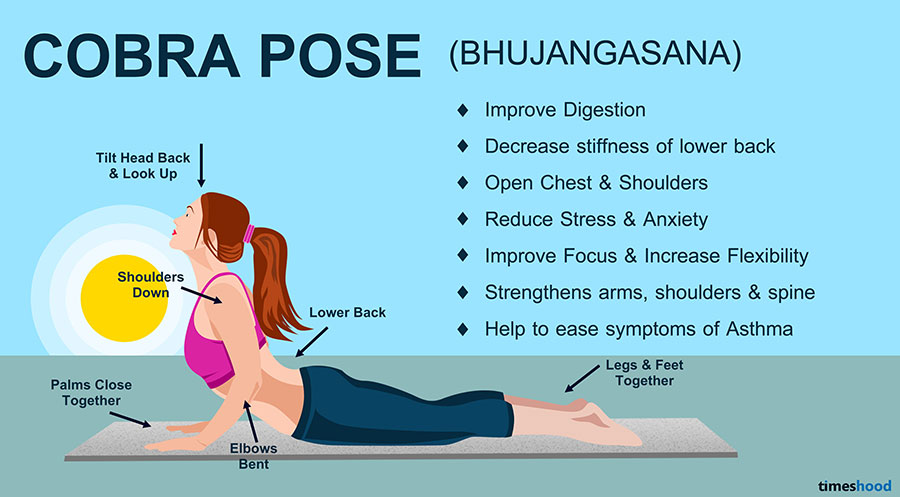
#3 Vrikshasana – Tree Pose
Vrikshasana, or Tree Pose, is an ideal yoga posture for individuals seeking to enhance their body’s balance. While it may pose an initial challenge for yoga beginners, consistent practice of this pose contributes to both mental and physical stability through improved balance.
The Sanskrit word “Vriksha” translates to “tree,” and “asana” signifies “pose.” This pose not only fosters focus and concentration but also induces a sense of calmness in the mind. Additionally, it strengthens key areas such as the ankles, thighs, calves, and vertebral column.
Benefits:
- Enhances balance and stability.
- Improves focus and concentration.
- Strengthens ankles, thighs, calves, and the vertebral column.
Duration: Aim to hold the Tree Pose for one minute on each leg, gradually building your capacity for balance.
How to Practice:
- Starting Position: Begin in Mountain Pose, arms alongside the body, and feet together.
- Leg Placement: Bend your right knee and place it on top of your left thigh, with the toes of the right leg pointing downwards. Ensure a 90-degree angle between the right and left legs.
- Arm Elevation: Raise your arms above your head, attempting to form the namaskar mudra with your palms.
- Balancing Act: Balance in the Tree Pose for as long as you can, aiming for at least one minute.
- Body Stretch: Stretch your body from top to bottom, maintaining a steady posture.
- Exhalation and Return: Exhale deeply as you gently bring your body back to the normal standing position.
- Repeat for Both Legs: Repeat the entire sequence with the other leg to complete one round.
- Gradual Progress: Start with one round initially and gradually increase to 3 to 5 rounds daily as your comfort and proficiency grow.
Incorporate Vrikshasana into your daily routine to cultivate not only physical steadiness but also a tranquil mind.
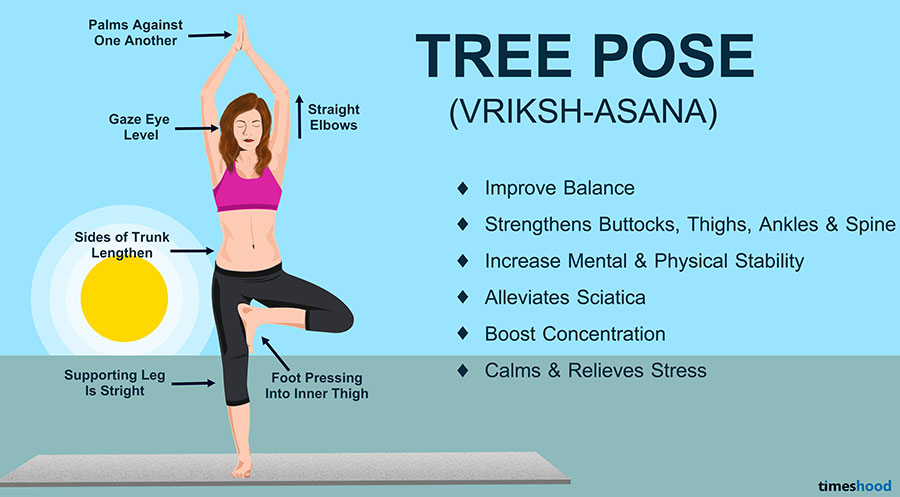
#4 Adho Mukha Shvanasana – Downward facing dog pose
Adho Mukha Shvanasana, commonly known as Downward Facing Dog Pose, is a foundational yoga pose with a name derived from Sanskrit: “Adho” means “forward,” “Mukh” translates to “face,” and “Shvana” denotes “dog.” The posture mimics the stretching position of a dog bending forward. This asana is accessible to beginners and offers numerous health benefits.
Benefits:
- Strengthens legs, arms, and back.
- Enhances flexibility.
- Relieves tension in the spine.
- Encourages full-body stretch.
Duration: Hold the Downward Facing Dog Pose for 1-3 minutes, gradually extending the duration as you become more comfortable with the posture.
How to Practice:
- Starting Position: Begin on your hands and knees, forming a table-like structure.
- Hand Placement: Move your hands slightly forward of your shoulders.
- Lifting the Hips: Exhale as you lift your hips, straightening both knees and elbows to form a V-shaped body.
- Alignment: Maintain hands and shoulders width apart, with feet hip-width apart and parallel to each other. Ensure toes point straight ahead.
- Neck Lengthening: Press your hands into the ground, lengthening your neck, and keeping your ears away from the inner arms.
- Hold and Breathe: Hold the pose for a few seconds, taking long, deep breaths.
- Exhalation and Return: Exhale, bend your knees, and return to the normal table position. Relax.
Include Adho Mukha Shvanasana in your yoga routine to enjoy its benefits in strength, flexibility, and overall body awareness.
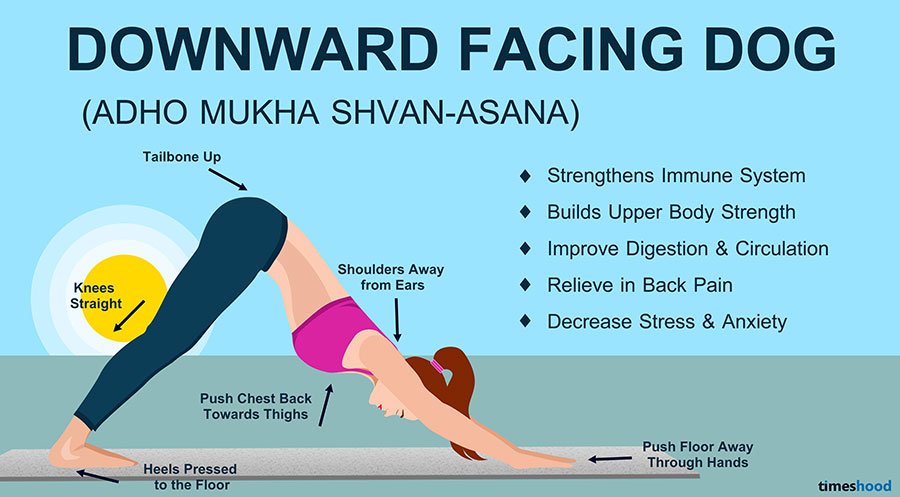
#5 Trikonasana- Triangle pose
Trikonasana, or Triangle Pose, is a standing yoga asana designed to reduce stress and enhance body stability. The Sanskrit name is derived from “Trikon,” meaning “Triangle,” and “Asana,” meaning “Pose.” Performing this pose with eyes open contributes to maintaining body balance.
Benefits:
- Strengthens ankles, thighs, shoulders, knees, and hips.
- Reduces stress and anxiety.
- Enhances overall body stability.
- Stretches the body at a 45-degree angle, promoting flexibility.
Duration: Hold the Trikonasana for 30 seconds, aiming for 3 to 5 repetitions on each leg. Consistent practice brings both beginners and seasoned yogis numerous health benefits.
How to Practice:
- Starting Position: Begin in the Tadasana pose, with feet comfortably wide apart and focus on your breathing.
- Foot Placement: Place your right foot outside at a 90-degree angle and the left foot at 15 degrees. Turn your left foot slightly inwards, ensuring your back toes are at a 45-degree angle.
- Body Alignment: Balance your body weight on both feet. Inhale deeply, and as you exhale, bend your body to the right, downward from the hips. Your waist remains straight, and your left hand reaches up in the air, while the right hand touches the ground.
- Arm Alignment: Keep both arms in a straight line, chest wide open, and the body perfectly bent sideways—neither backward nor forward.
- Head Position: Stretch your left arm in line, keep your head in a neutral position, and direct your gaze upward.
- Focus and Breath: Focus on stabilizing your body while stretching to the fullest, taking a deep, long breath.
- Relax and Repeat: Relax by dropping your arms to your side and returning your feet to a straight position. Repeat the sequence with the other leg.
Include Trikonasana in your yoga practice to experience the holistic benefits it offers for your physical and mental well-being.

#6 Utkatasana – Chair Pose
Utkatasana, or Chair Pose, invites you to experience the challenge of sitting on an imaginary chair. “Utkat” in Sanskrit translates to “powerful,” and “Asana” refers to “pose.” Recommended for yoga beginners due to its emphasis on determination and focus, this foundational asana enhances overall flexibility and balance.
Benefits:
- Strengthens thighs, vertebral column, ankles, and calves.
- Improves overall flexibility and balance.
- Engages and tones key muscle groups.
- Builds endurance and stamina.
Duration: Hold the Chair Pose for 30-60 seconds to experience its full benefits.
How to Practice:
- Starting Position: Stand straight with feet slightly apart.
- Arm Position: Raise your arms straight on your shoulders, ensuring your elbows remain unbent.
- Chair Imagery: Bend your knees gently, lowering your pelvis as if sitting on an imaginary chair. Embrace the challenge; it’s not meant to be overly comfortable.
- Duration Challenge: Aim to maintain the pose for at least 60 seconds, focusing on your determination and calmness of mind.
- Relax and Restore: Gently release the pose, calming your mind. Optionally, you can transition into a seated position on the floor to further relax.
Utkatasana is an empowering pose that encourages mental focus and determination. Include it in your yoga practice to build strength, flexibility, and a sense of balance.

#7 Naukasana- Boat pose:
Naukasana, or Boat Pose, mimics the shape of a boat, symbolized by the Sanskrit word “Nauka” for “Boat” and “Asana” for “Pose.” This engaging asana offers a full-body workout, targeting the strengthening of lungs, liver, pancreas, and abdominal muscles. Additionally, it proves beneficial for those aiming to reduce belly fat. While challenging for beginners, consistent practice yields improvement over time.
Benefits:
- Strengthens lungs, liver, pancreas, and abdominal muscles.
- Aids in reducing belly fat.
- Enhances overall core strength.
- Improves balance and stability.
How to Practice:
- Starting Position: Begin by lying down on your yoga mat with arms resting on the sides, in a relaxed state.
- Lift Both Legs: Inhale deeply, lifting both legs off the ground while keeping them straight without bending.
- Raise Upper Body: Simultaneously, raise your upper body, extending your arms parallel to your legs.
- Maintain a 45-Degree Angle: Aim to create a 45-degree angle with your body, resembling the shape of a boat.
- Hold the Pose: Maintain this posture for at least 10-15 seconds initially, gradually increasing as your strength improves.
- Exhale and Relax: Slowly exhale, returning to the initial straight position, and relax.
- Consistent Practice: Regular practice will contribute to an extended duration of holding the posture.
Naukasana is an invigorating pose that not only strengthens your core muscles but also promotes balance and stability. Integrate it into your yoga routine for a holistic and strengthening experience.
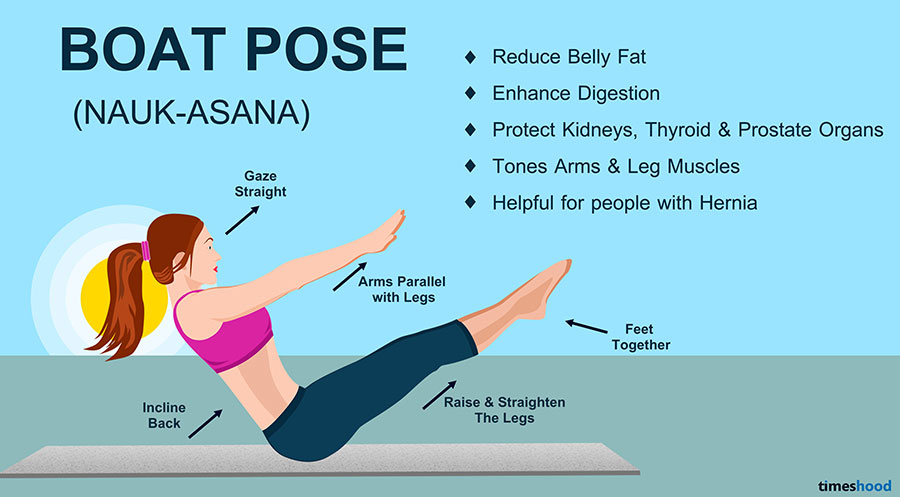
#8 Marjariasana- Cat and Cow Pose
Marjariasana, commonly known as Cat and Cow Pose, is an ideal starting point for yoga beginners. This pose serves as a preparatory step for more advanced yoga activities. The body takes the form of a cat and cow, inspiring the name of this dynamic pose.
Benefits:
- Prepares the body for more advanced yoga poses.
- Enhances flexibility and strength in the spine.
- Alleviates stiffness in the back and neck.
- Improves coordination and balance.
- Acts as a gentle massage for the spine.
How to Practice:
- Starting Position: Begin on your hands and knees, creating a tabletop structure with your back forming the tabletop and hands and feet as the legs of the table.
- Hand and Knee Placement: Ensure your arms are perpendicular to the floor, palms facing down. Maintain your knees on the floor, width apart, and gaze straight ahead.
- Cow Pose: Inhale slowly, raising your chin as you tilt your head backward. Simultaneously, push your navel down and raise your tailbone. Compress your buttocks.
- Transition to Cat Pose: As you exhale, draw your belly towards your spine, rounding your back toward the ceiling, resembling a cat stretching its back.
- Repeat Poses: Inhale for Cow Pose and exhale for Cat Pose. Repeat this sequence at least 5 times for yoga beginners.
Marjariasana not only acts as an excellent warm-up but also contributes to spinal flexibility and overall body coordination. Integrate this simple yet effective pose into your routine to prepare your body for more complex yoga activities.

#9 Balasana – Child Pose
Balasana, commonly known as Child Pose, is an essential yoga pose for beginners. The term “Balasana” originates from Sanskrit, where “bala” translates to “child,” and “asana” refers to “pose.”
Benefits:
- Relaxation: A deeply relaxing pose that alleviates stress and fatigue.
- Flexibility: Stretches the hips, thighs, and ankles.
- Muscle Relaxation: Gently relaxes the muscles of the front body.
- Posture Improvement: Helps improve posture by elongating and aligning the spine.
- Pain Relief: Contributes to the relief of back and neck pain.
How to Practice:
- Starting Position: Sit on your heels with your big toes touching and knees separated about as wide as your hips.
- Forward Bend: Slowly bend forward, lowering your forehead to the floor.
- Arm Placement: Keep your arms extended on the floor with palms facing down.
- Chest Press: Gently press your chest towards your thighs.
- Hold and Relax: Maintain the pose for a few seconds, allowing your body to relax.
- Return to Normal: Slowly come back to the starting position and relax.
Balasana is a foundational yoga pose that not only promotes physical flexibility but also provides mental relaxation. Integrate this pose into your practice to unwind, stretch, and cultivate a sense of calmness.

#10 Sukhasna- meditation
Sukhasana, commonly known as the Meditation Pose, is a comfortable seated posture suitable for both beginners and advanced practitioners. The term “Sukhasana” originates from Sanskrit, where “Sukham” means “comfort,” “easy,” “joyful,” or “pleasure,” and “asana” refers to “pose.”
Benefits:
- Comfortable Seating: Provides a comfortable and stable seated position for meditation and pranayama.
- Versatility: Suitable for practitioners of all age groups.
- Concentration Improvement: Enhances concentration and focus.
- Spiritual Connection: Facilitates a connection with the spiritual aspect of oneself.
How to Practice:
- Seated Position: Sit comfortably on a yoga mat with legs crossed.
- Crossed Legs: Cross your legs, placing the left leg tucked inside the right thigh and the right leg tucked inside the left thigh.
- Spine Alignment: Keep your spine straight to maintain proper alignment.
- Hand Placement: Rest your hands on your knees.
- Mudra Position: Choose a mudra like Jnana mudra or Chin mudra for meditation.
- Relax and Breathe: Relax your body, take deep and gentle breaths, and focus your mind.
Sukhasana is a versatile pose that serves as a foundation for various meditation and breathing exercises. By practicing Sukhasana regularly, individuals can cultivate a calm and centered state of mind.
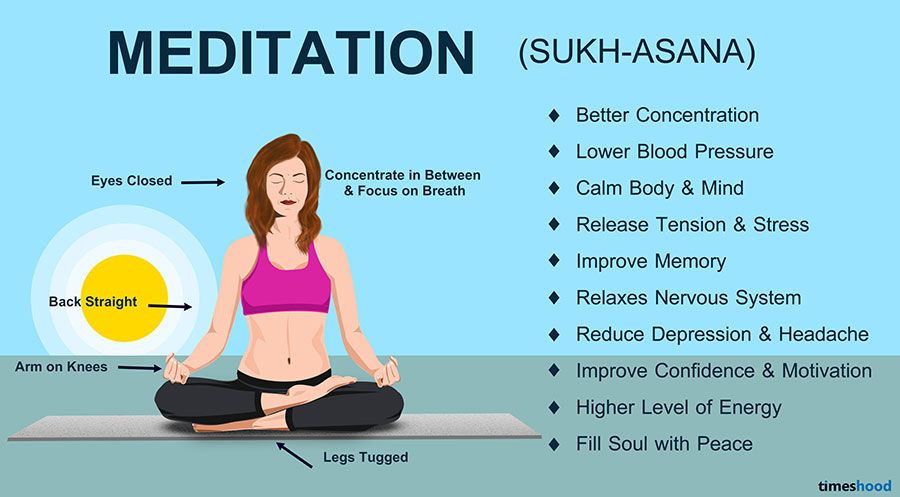
Explore 10 Easy Yoga Poses Perfect for Newbies
🌟 Dive into the world of yoga bliss with our exclusive infographic! 🧘♀️✨ Discover the simplicity of 10 beginner-friendly yoga poses that will elevate your practice. Save and share this guide to spread the tranquility. Happy stretching! 🙏💚 #YogaJourney #BeginnersGuide
![Yoga Pose for beginners - 10 Simple yoga pose for beginners with benefits [Infographic]. 10 Morning Yoga Workout for Women. Flat Belly Yoga Workout | Fat Burning Yoga Poses | Yoga for Positivity](https://timeshood.com/wp-content/uploads/2017/05/Yoga-For-Beginners.jpg)
Embarking on your yoga journey opens the door to a world of physical and mental well-being. These ten beginner-friendly yoga poses are your gateway to tranquility, flexibility, and balance. Remember, progress is a journey, not a destination. Keep stretching, breathing, and nurturing your inner yogi!
Related Searches: Yoga for beginners, Easy yoga routine, Beginner-friendly yoga, Yoga benefits, Simple yoga poses, Meditation for starters, Yoga for mental well-being, Gentle stretching exercises, Relaxing yoga sequences, Mindful breathing techniques.

